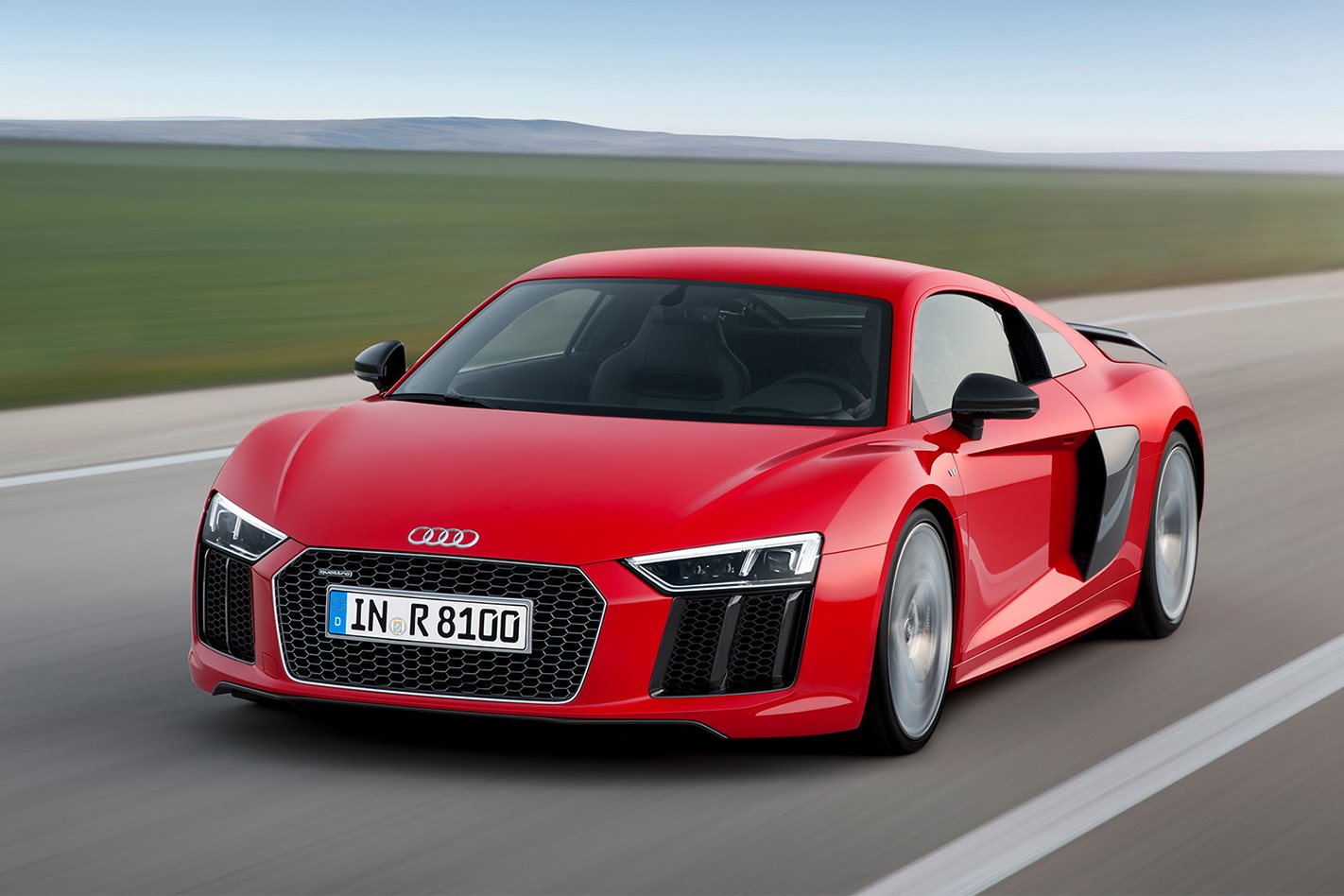A NEW second-generation Audi R8 has been revealed that will give buyers the choice of swapping the supercar’s former strict diet of hydrocarbons for electrons.
Officially unveiled overnight, the lighter, faster, slipperier two-door coupe drops its atmo V8 exclusively in favour of the free-breathing V10 that will pump out up to 449kW and 560Nm – a 45kW/20Nm leg-up over the most powerful bent 10 used in the model it replaces – and a special-order E-tron badged, battery fuelled model that offers up to 450km of driving range with a rapid-fire recharge time.
Like the previous model, the new R8 is built on a modular space frame. However, this time around the supermodel adds lashings of lightweight carbon-fibre reinforced plastics to the mix, adding strength but helping to shed as much as 50kg of weight to tip the scales at 1454kg, or about the same as a high-end Mazda 3 sedan.
The hi-po version of the 5.2-litre V10 will push the new R8 from 1-100km/h in 3.2 seconds via its launch control function, shedding 0.3 secs off the previous range-topper’s time, before running out of momentum at 330km/h. And although it features Audi’s Quattro system that sends drive to both the front and rear wheels, the system now allows Quattro to deliver all the power to just the rears.
The R8 will also be a technological tour de force, featuring LED headlights and tail-lamps as standard, with buyers able to tick a box on the options list for a laser-based high-beam headlight that shoots a shaft of light 600 metres down the road.
A driver-selectable dynamic handling system will allow on-the-fly tweaks to the engine, the electromechanical steering, torque distribution between the front and rear wheels, and the seven-speed dual-clutch gearbox.
The R8’s sports car focus will also be enhanced via a “performance” button mounted on the steering wheel – optional on the 397kW/540Nm version but standard on the more powerful one – that tunes the low-slung coupe to optimise it for dry, wet or slippery conditions.
European market versions of the R8 will have magnetic-control dampers that stiffen up at the touch of a button, and a bimodal exhaust system that gives more growl to the V10 sitting behind the driver available on the options list.
The electric version of the R8, meanwhile, will include an onboard charging system that can top up the T-shaped battery hidden in the transmission tunnel and folding behind the seats in what Audi claims is “significantly less” than two hours.
The electric system in the R8 produces 340kW and a massive 920Nm, which is enough to officially push the EV from 0-100km/h in 3.9 seconds – faster than the old V8 version’s sluggish 4.3.
Dropping the $279,500 entry-level V8 in favour of the V10, which in Australia kicks off from $366,900, can go two ways for buyers here once Audi brings in the new R8, expected to be either late this year or early in 2016.
It can either fill the price gap vacated by the now-extinct V8, or chase the gap opened up by the V10-only, $428,000 Lamborghini Huracan with which the R8 shares its hydrocarbon-fuelled heart – and performance figures.
As for the battery-fuelled version selling here? Audi has hinted that the off-again, on-again environmental hero will only be sold in selected markets, suggesting that for only a handful of sales in Australia, it could be well off the radar. We’ll have to wait and see.





